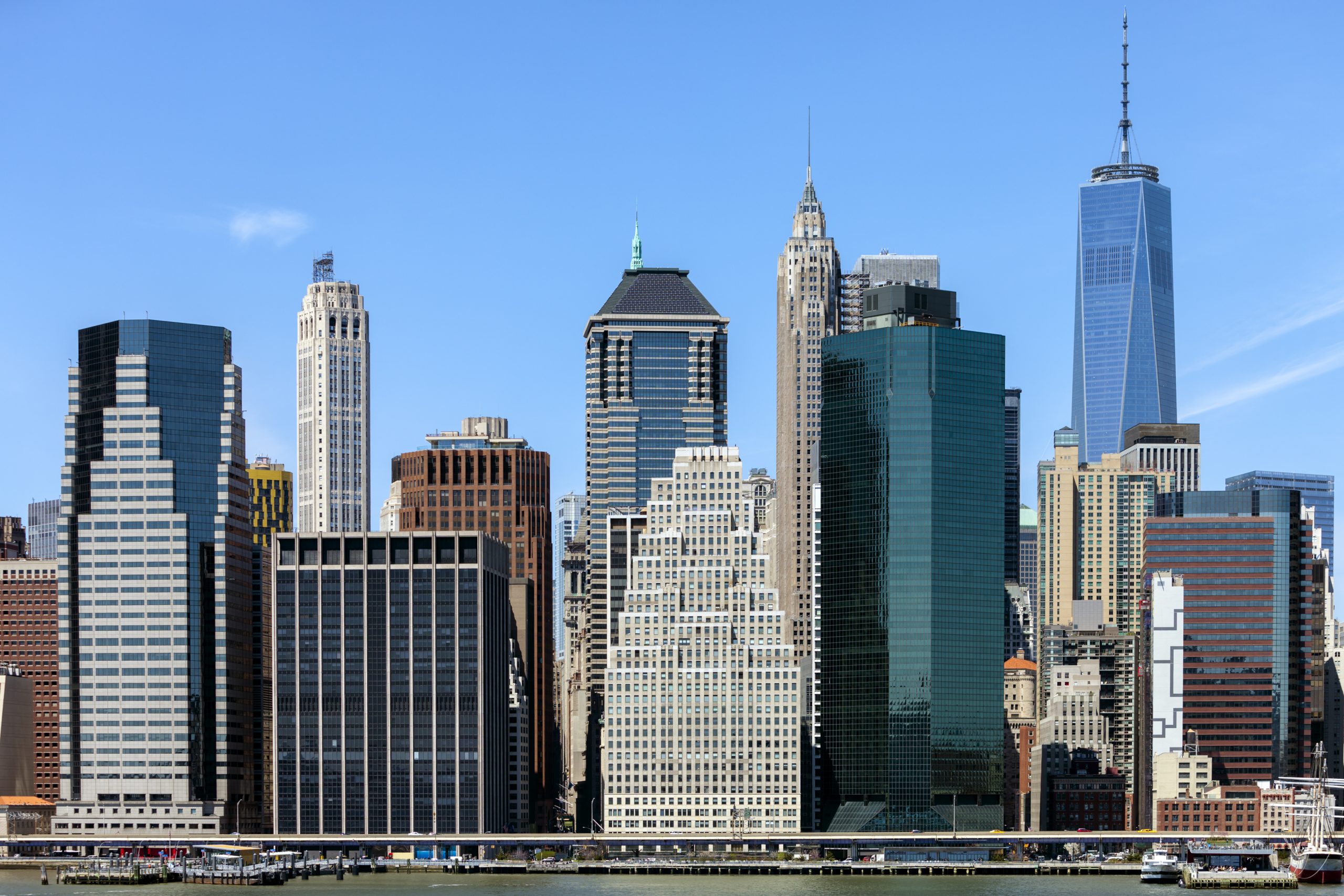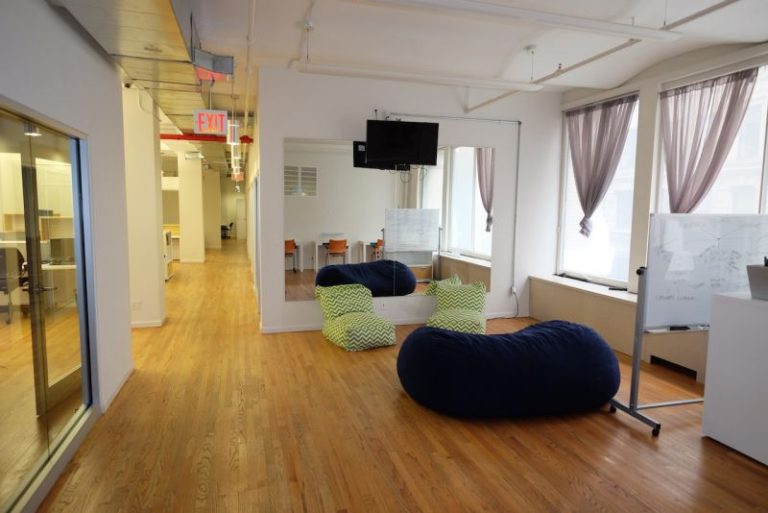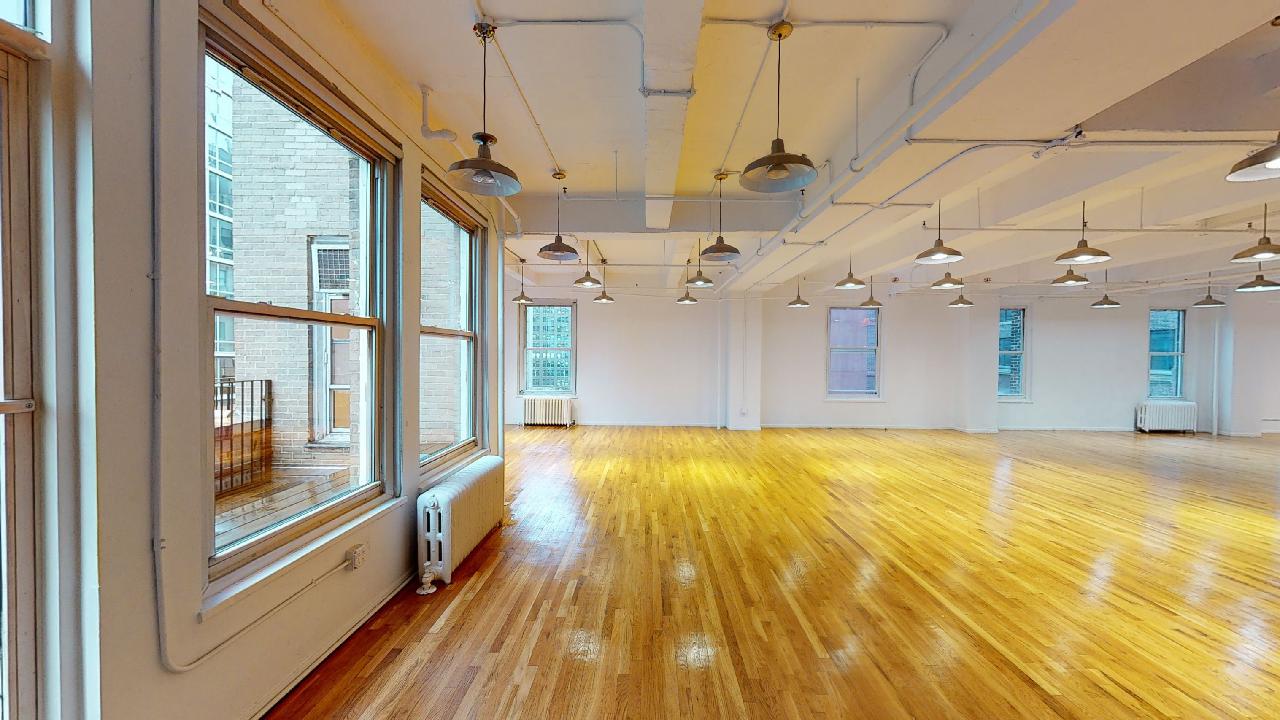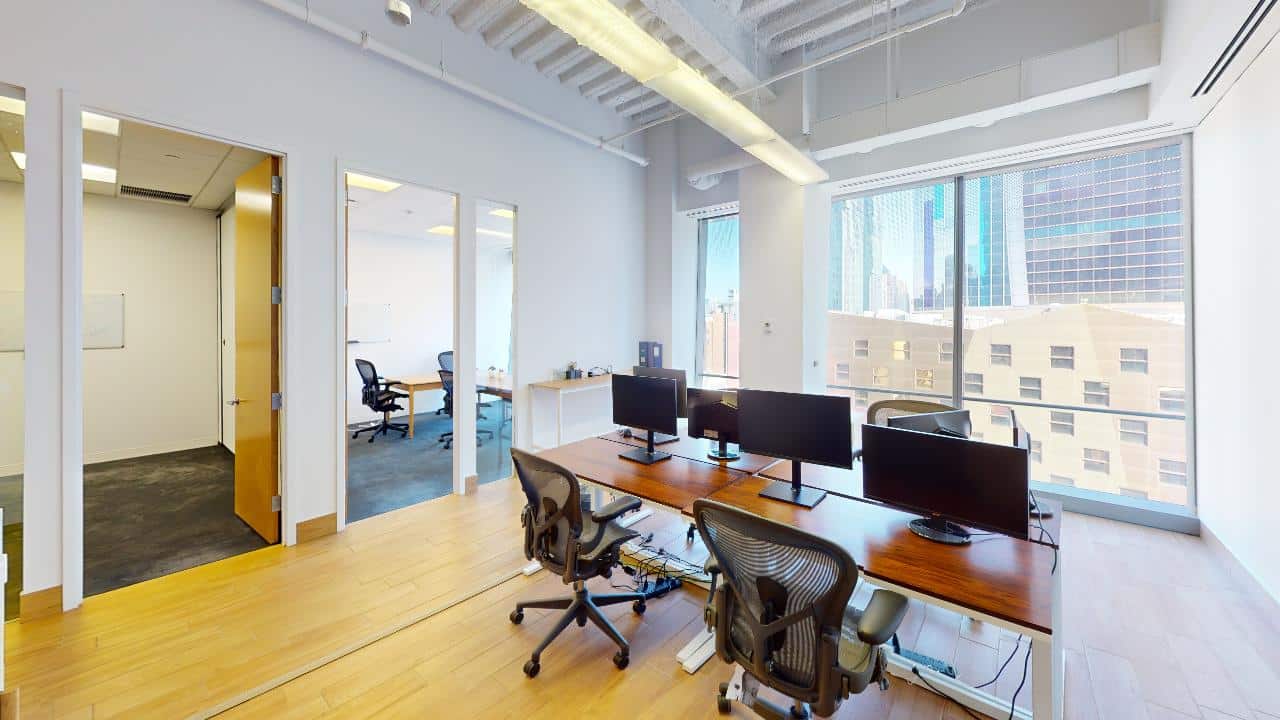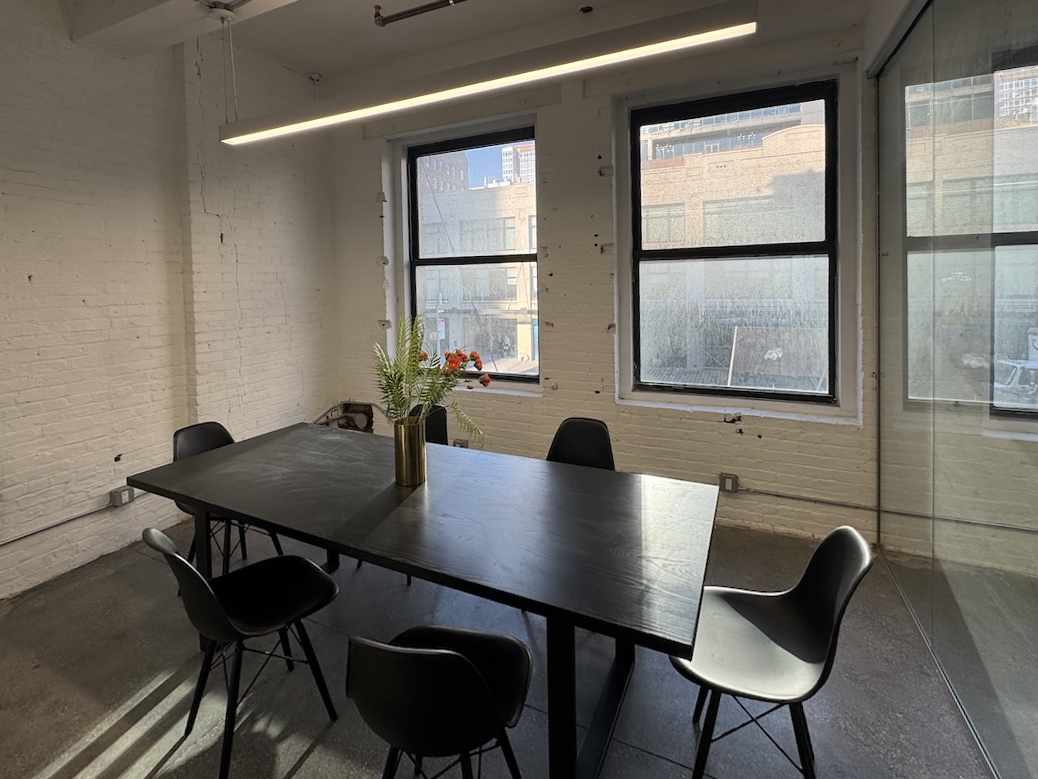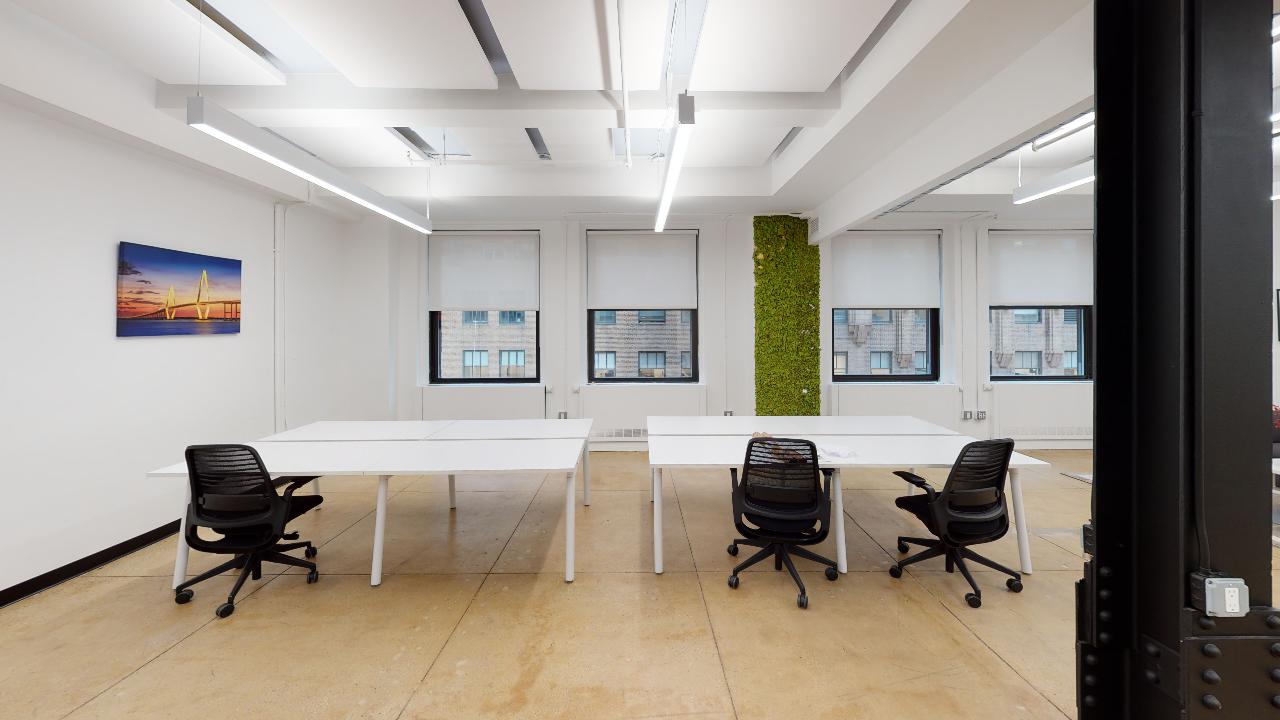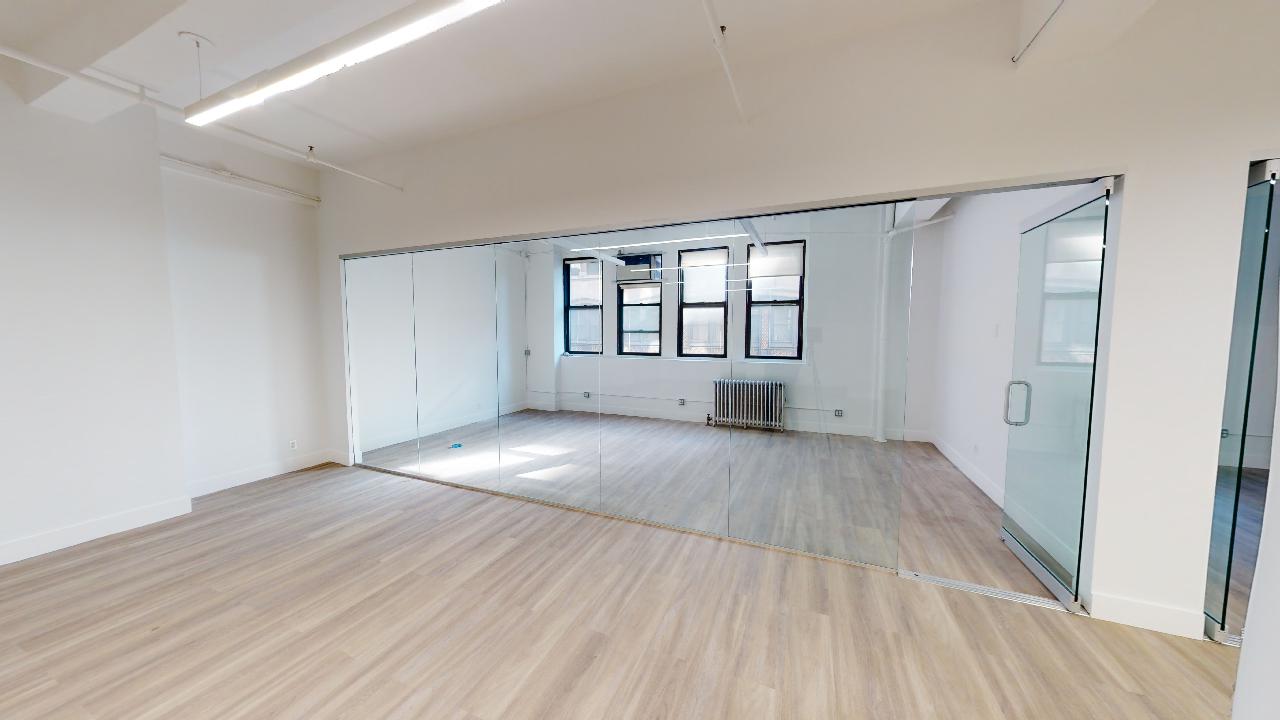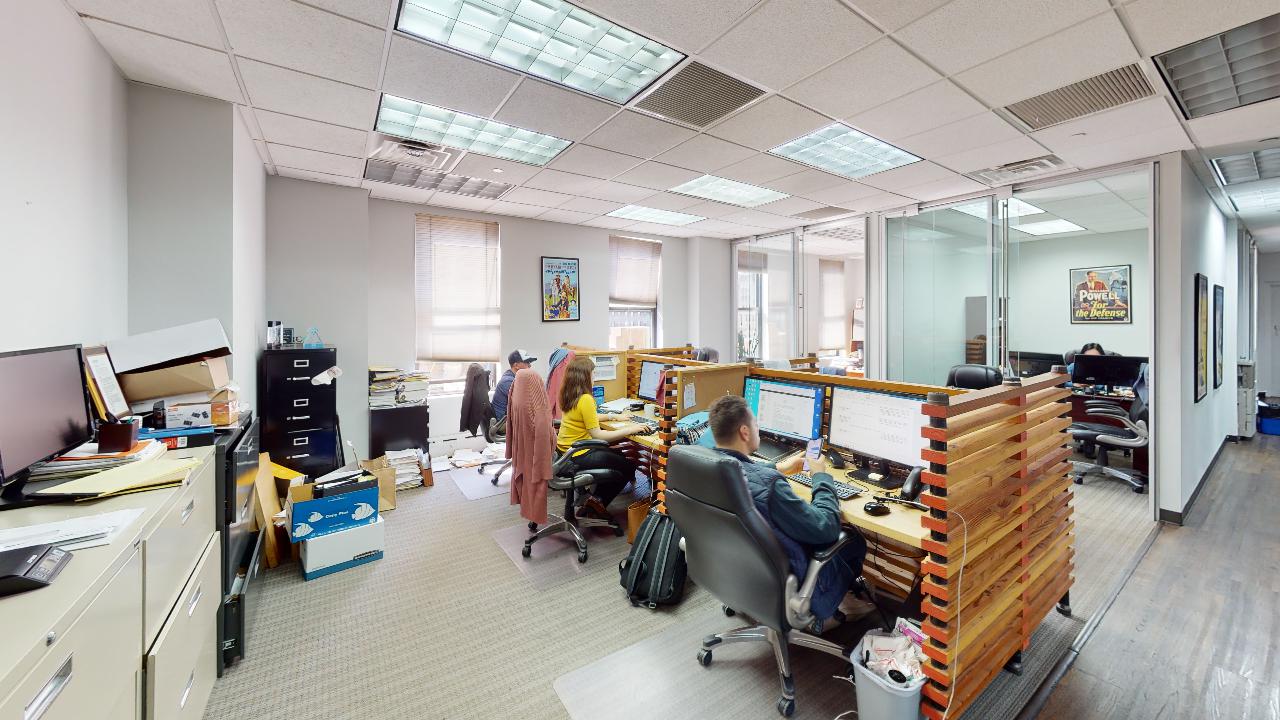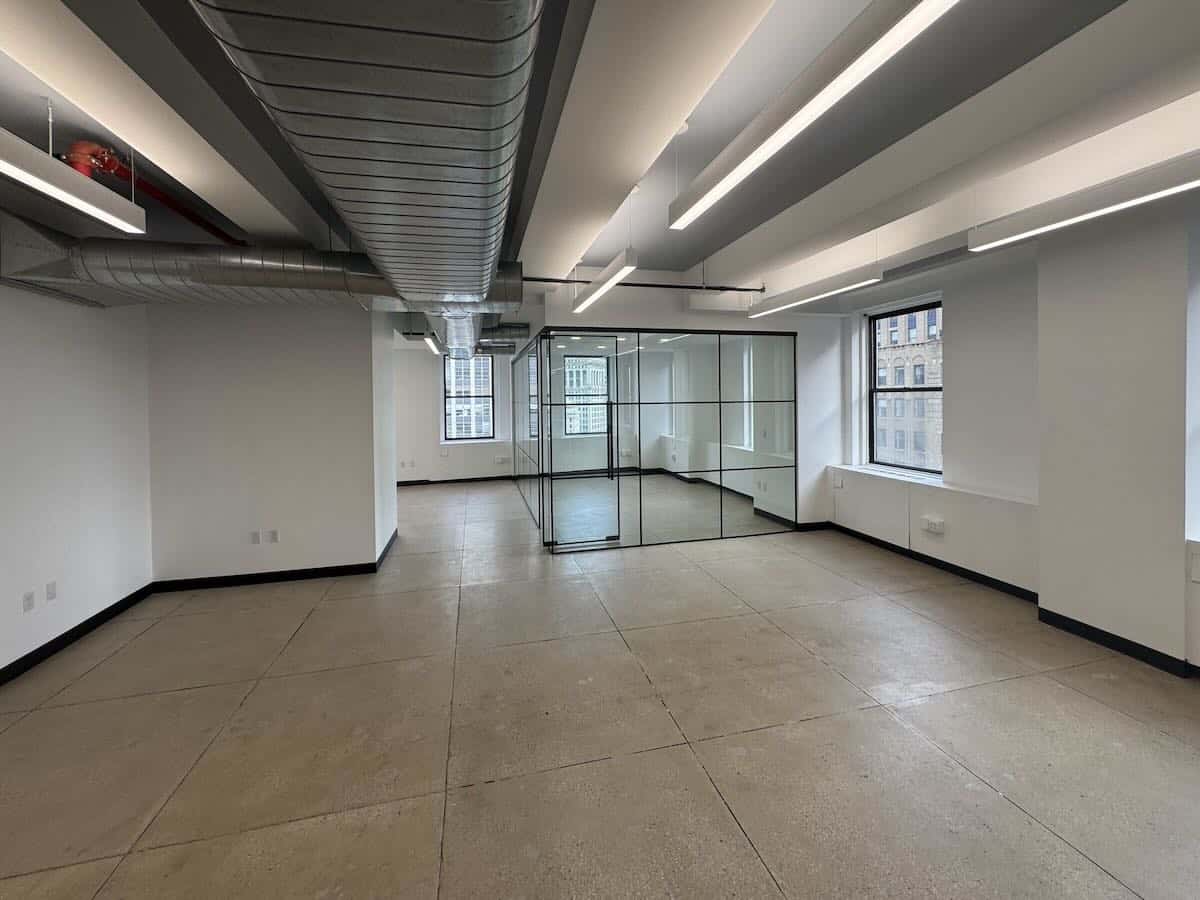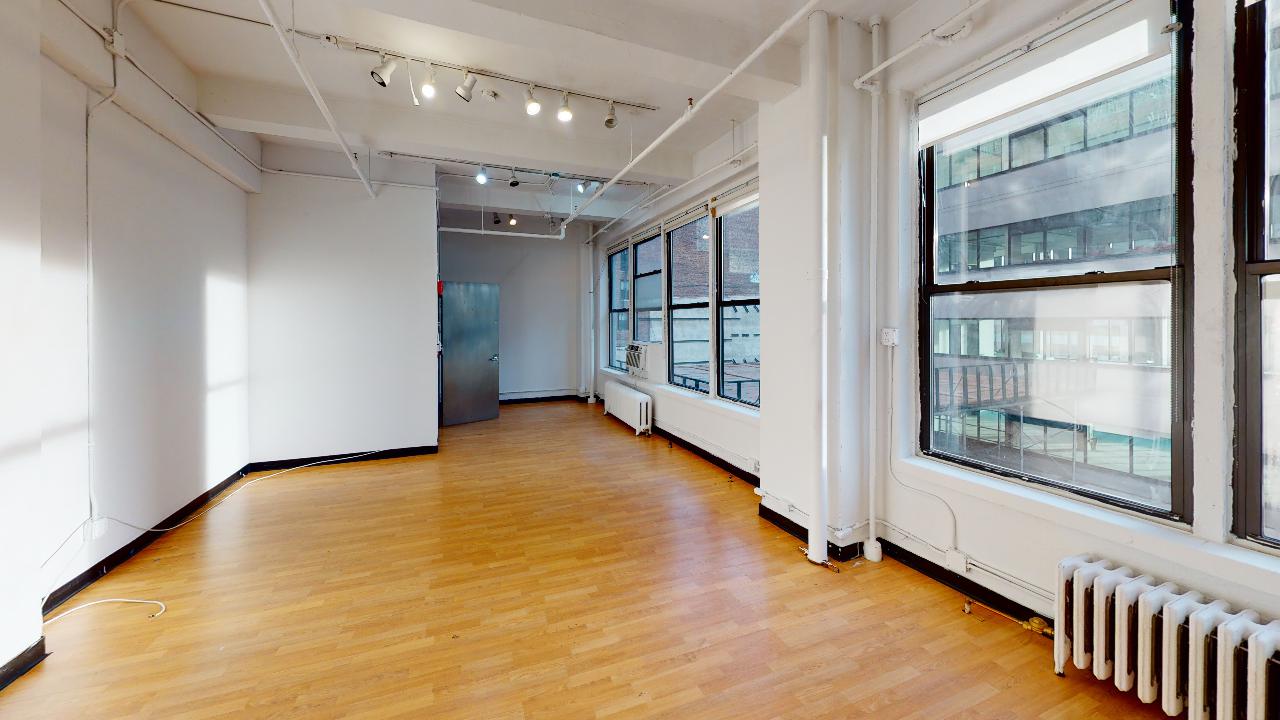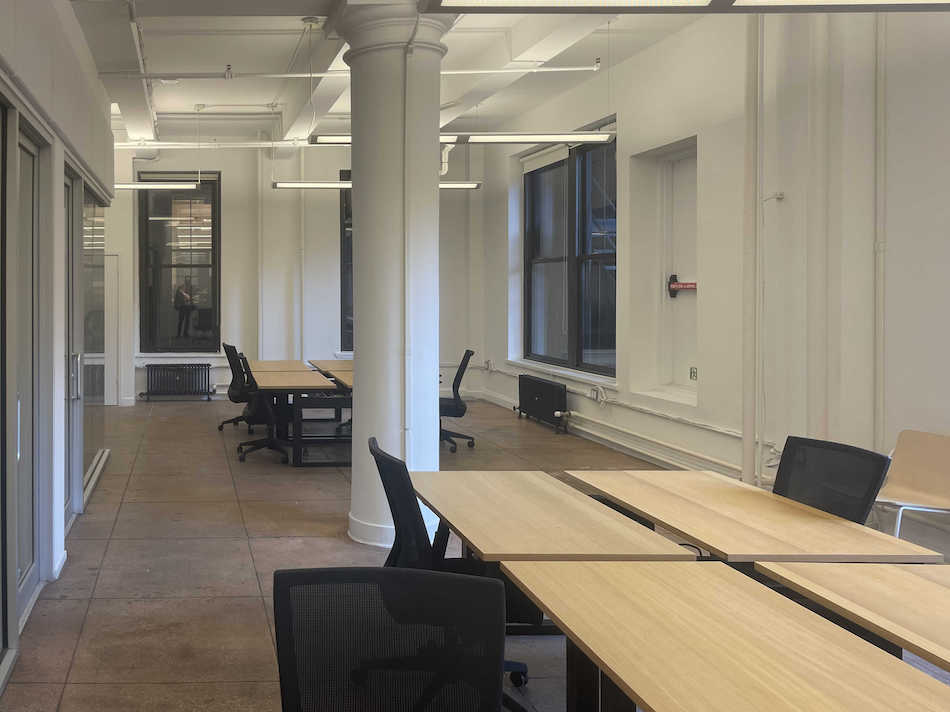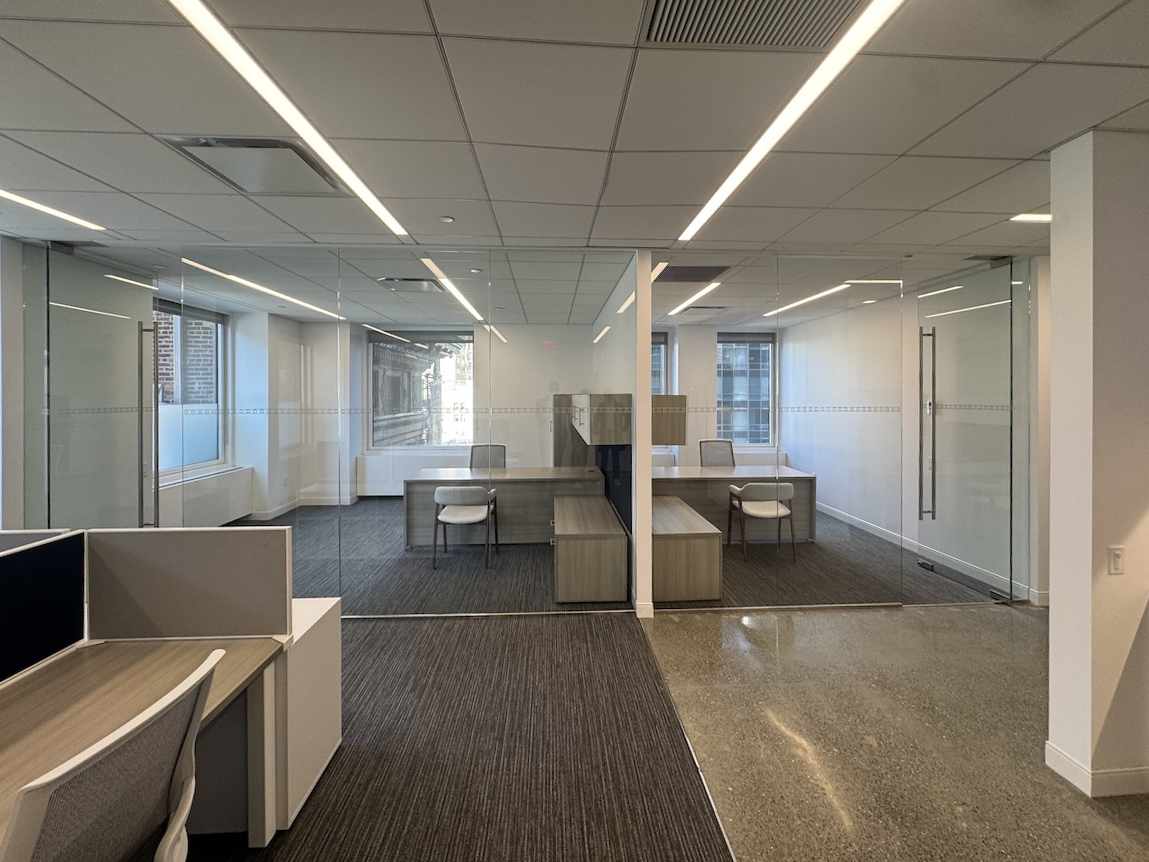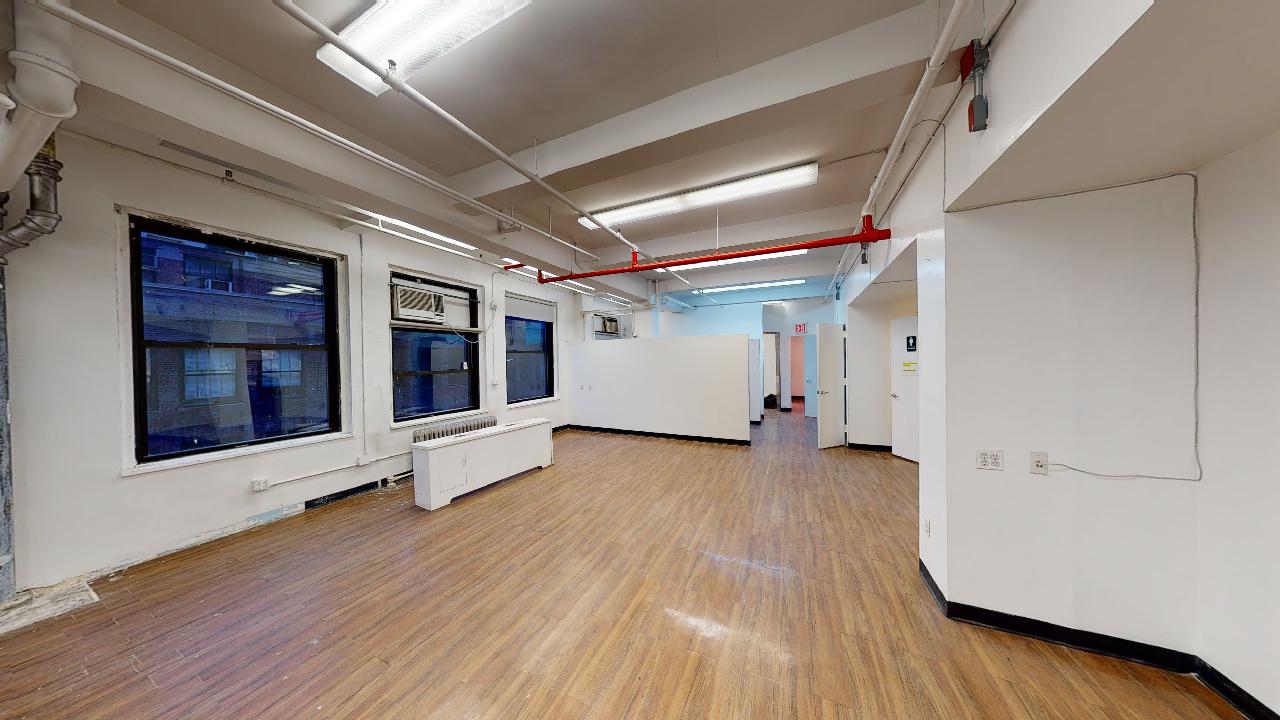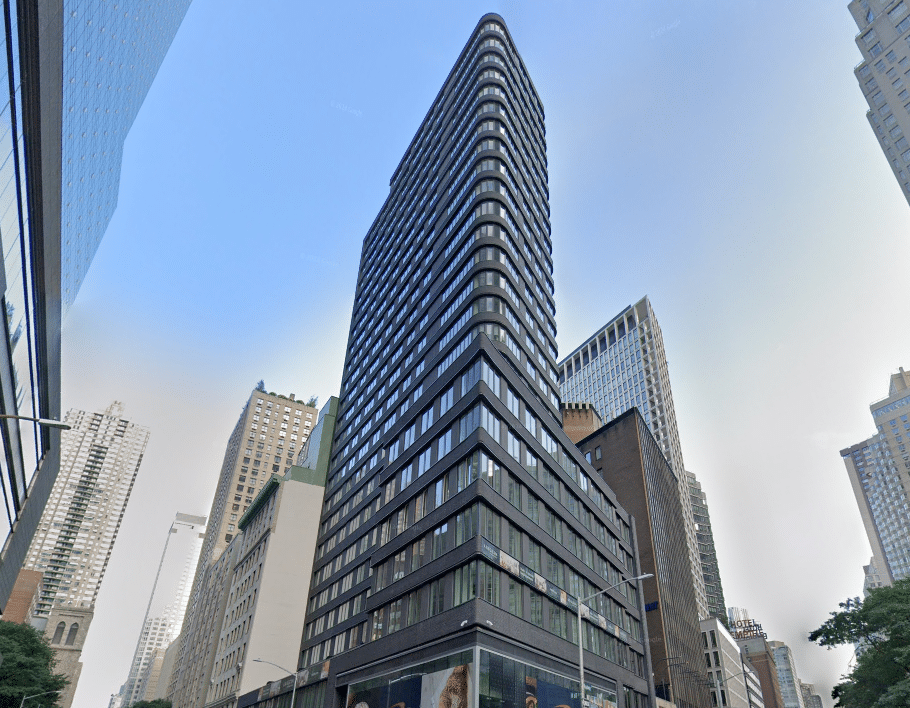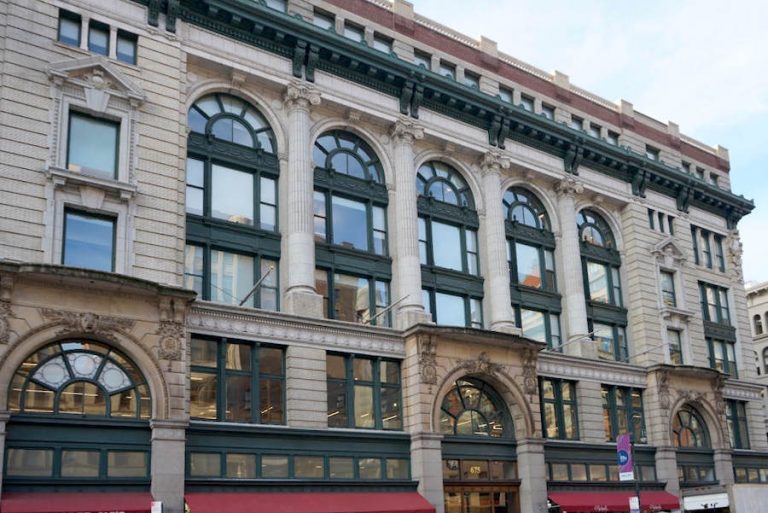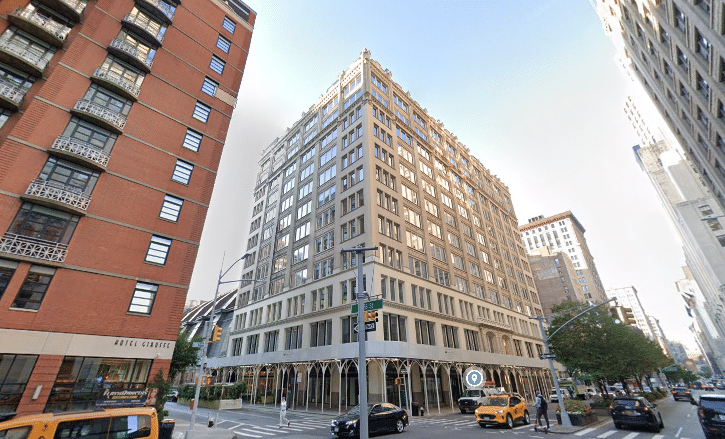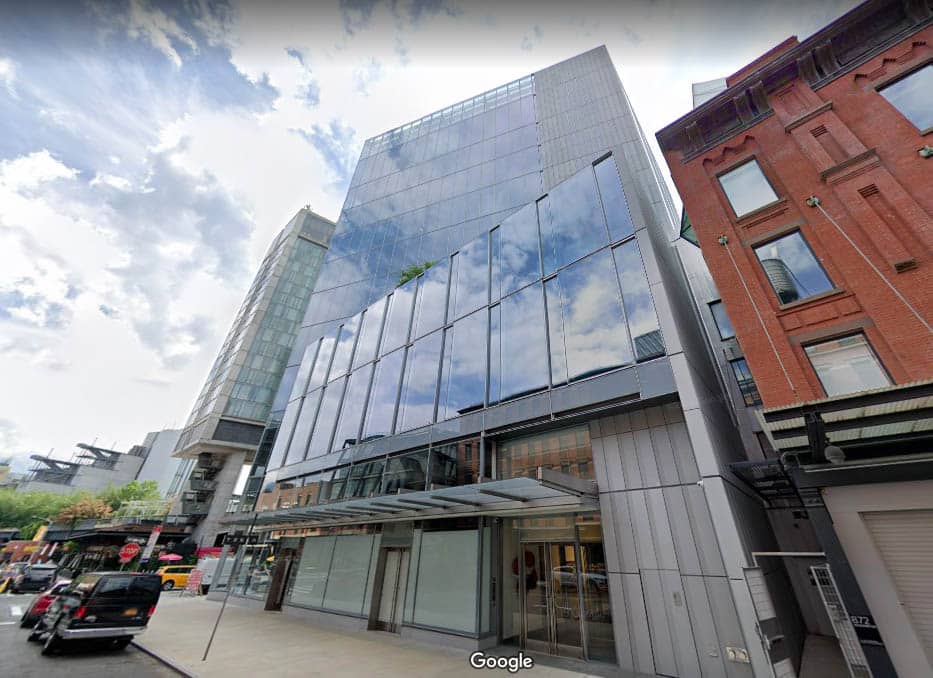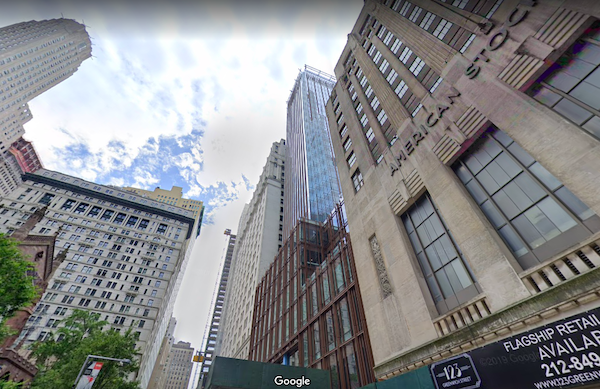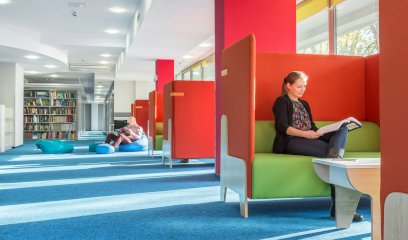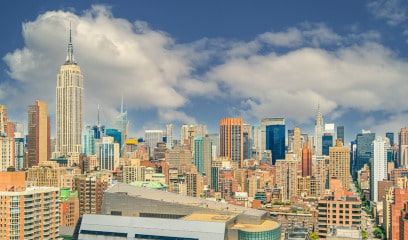In the wake of the increasing acceptance of remote and hybrid work models, NYC’s towering office buildings, symbols of Manhattan’s bustling business prominence, face a unique challenge: How to remain relevant, filled, and environmentally friendly in a shifting urban landscape. With the introduction of Local Law 97, New York leaps forward, ensuring that these skyscrapers don’t just stand tall but also stand green.
Skyscrapers and Sustainability: A New Manhattan Narrative
As remote work grows in popularity, the traditional prestige of Manhattan’s iconic skyscrapers is shifting, leading to debates about their future role and impact.
The Declining Lure of Prestigious Addresses
With the surge in remote work, the allure of having an office in a renowned Manhattan skyscraper is waning. This change has sparked discussions about repurposing these grand structures. Proposals range from converting them into affordable housing units to transforming them into hotels.
A Push for Sustainability
While some focus on repurposing, others emphasize the need for sustainability. As vacant spaces rise, there’s a growing call for city officials and building owners to prioritize energy-efficient structures. The purpose is not just to entice tenants but also to play a role in environmental conservation.
Environmental and Health Concerns
The glistening skyscrapers, though majestic, cast a shadow on the environment. New York State leads the nation in fossil fuel consumption in its residential and commercial real estate spaces. This consumption has dire consequences: officials blame pollution from these buildings for a staggering 1,940 premature deaths and health impacts costing $21.7 billion in 2017.
Revitalizing NYC’s Office Towers: A Drive Towards Energy Efficiency
While iconic, NYC’s towering office buildings present a puzzle in today’s eco-conscious era. How can these massive structures be transformed into sustainable marvels? From legislation to retrofitting, the city seeks innovative solutions to this challenge.
Legislative Push for Greener Buildings
Environmental groups, advocates, and City Council members have joined forces, aiming to legislate against fossil fuel hookups in new constructions and major renovations. This ban targets pollution reduction and promotes clean energy job creation and a shift to all-electric buildings. With Mayor Bill de Blasio’s backing, the city looks forward to a cleaner construction scene by 2030.
Challenges of Aging Infrastructure
Many of NYC’s structures are aging, lacking modern energy-efficient amenities. The continued reliance on gas hookups, window A.C. units, and non-thermal windows exacerbates the city’s emissions problem. Though retrofitting is a solution, its high cost and landlords’ pandemic-induced financial strains complicate matters. However, mandates from laws like the 2019 Local Law make it imperative to address these issues.
Local Law 97, Almost 2 Years Later
Two years on from its inception, Local Law 97 continues to shape the environmental trajectory of New York City’s real estate landscape. This ambitious regulation, unparalleled in scope and impact in the U.S., sets crucial benchmarks and incentives to combat building emissions.
The Core Tenets of the Law
In a bold move, NYC, in 2019, launched Local Law 97 under the Climate Mobilization Act. This law mandates the city’s 50,000 largest buildings to cut carbon emissions significantly: 40% by 2030 and a staggering 80% by 2050. Collectively, these buildings contribute to approximately 60% of the city’s building emissions. Non-compliance could result in fines escalating to $268 per ton of excess emissions, amounting to $5 million annually.
Navigating the Emission Maze
The law offers various pathways for building owners to adhere to these rigorous standards. These include retrofitting projects, harnessing renewable power sources, and exploring carbon trading. The emphasis is on innovation and adaptation to a more sustainable future.
PACE: Financing the Green Transition
The Climate Mobilization Act introduced property-assessed clean energy financing, or PACE, to further bolster the city’s environmental endeavors. This initiative aims to financially empower building owners, enabling them to undertake energy-efficient overhauls and repay the loan over an extended period, typically two decades or more.
Beyond the evident environmental benefits—like the anticipated reduction of 447,600 metric tons of CO2e—it is forecasted to generate 689 green jobs. The program’s accessibility extends to various buildings, from commercial spaces to non-profit establishments, making sustainability an inclusive endeavor.
111 Wall Street: Pioneering PACE Financing for a Sustainable Future
111 Wall Street, formerly known as the Citibank Building, has become an emblematic case in NYC’s green financing journey, as it’s the inaugural building to embrace PACE for enhancing sustainability. This landmark move signals the rising importance of financial mechanisms in promoting environmentally conscious infrastructural upgrades.
An Investment in Green Infrastructure
In a move applauded by environmentalists and financial analysts alike, 111 Wall Street secured an $89 million PACE loan in June under Mayor Bill de Blasio’s endorsement. This significant financial push aims to retrofit 900,000 square feet of office space. Preliminary figures are promising, with projected annual energy savings of $2.5 million and potential avoidance of $750,000 in Local Law 97 fines by 2030.
Beyond PACE: Comprehensive Building Upgrades
However, the PACE loan is just one facet of a broader vision of Nightingale Properties and Wafra Capital for 111 Wall Street. Armed with $500 million in additional financing, these stakeholders are poised to revolutionize the Lower Manhattan office building. Visitors and tenants can anticipate many enhancements, such as a sleek curtain wall, expansive floor-to-ceiling windows, an ultramodern lobby, and the incorporation of smart building technologies. Additionally, the developers will dedicate 40,000 square feet to diverse amenities—from state-of-the-art conference and event spaces to a fitness hub and a charging room for bikes and scooters.
Revisiting 111 Wall Street’s Legacy and Future
111 Wall Street, with its roots as the iconic Citibank Building, has long been a fixture in NYC’s architectural tapestry. It stretches over an entire city block, offering unparalleled access to major transportation hubs. As the building embarks on this sustainable transition, its 1.2 million square feet of prime Class A Manhattan office space across 25 stories will retain its historical significance and set new energy efficiency standards.
The Key Takeaway
As the digital age reshapes how we work, the towering skyscrapers of NYC are pivoting from mere landmarks to symbols of a sustainable revolution. Local Law 97 and groundbreaking initiatives like PACE signify New York’s unwavering march towards a greener horizon, with 111 Wall Street leading the parade of transformation. As the contours of Manhattan’s skyline redefine their legacy, one can’t help but wonder what the future holds.
